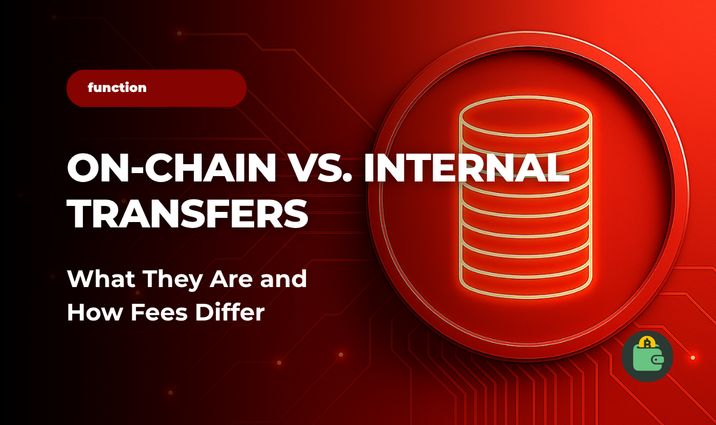On-chain and Internal Transactions: How They Work and What Makes Them Different

In the world of cryptocurrencies, there are two fundamentally different ways to transfer funds — on-chain transactions and internal, or off-chain, transfers. Although they may look similar from the outside, these mechanisms differ greatly in their technical structure and in how users experience them.
Understanding the difference helps you navigate transfers, estimate fees, and choose the best method for moving assets.
Key Takeaways
- On-chain transactions provide maximum transparency and independence because they are recorded directly on the blockchain, but they come with network fees and slower processing times.
- Internal transfers, in contrast, are handled within centralized platforms, allowing instant and usually free movement of funds, though they require trust in the service provider.
- Choosing between these two methods depends on whether a user values full control and decentralization or prefers speed, convenience, and zero-fee transfers within an exchange ecosystem.
The Technical Nature of On-chain Transactions
An on-chain transaction is a classic blockchain transfer. It takes place directly in the network, is recorded in a decentralized ledger, and becomes part of the blockchain. To complete such a transfer, the sender signs the transaction with their private key, network nodes receive it, and miners or validators include it in a block. After that, the data becomes immutable — it cannot be reversed or altered.
Decentralization and cryptographic security make on-chain transactions highly reliable, but they also make them slower and more expensive. Every transfer requires a network fee, and the processing time depends on network load.
How Internal Transfers Work on Centralized Platforms
Internal transfers work very differently. This mechanism exists only inside centralized platforms such as exchanges or custodial services. In this case, the transaction never reaches the blockchain. The platform simply updates its internal database, moving assets between user accounts.
No block is created, the network does not participate, and no validators confirm the operation. Internal transfers are instant and require no network fees, but they depend entirely on trust in the platform, which controls the actual assets.
Where Different Types of Transactions Are Used
In practice, on-chain transactions are typical for self-custodial wallets where the user fully controls their keys. Any transfer from Coin Wallet, for instance, or a hardware wallet interacts directly with the blockchain.
Internal transfers are mostly found on centralized exchanges. These platforms can instantly move funds between accounts without putting any load on the network, and they rely on on-chain transactions only for external deposits and withdrawals.
Fees and How They Differ
The fee structure also varies significantly. An on-chain transfer always includes a network fee. Its size depends on the chosen blockchain and current network congestion. Exchanges may add their own fixed withdrawal fee, which is often higher than the actual cost of sending the transaction and acts as a service charge.
Internal transfers require no network fees and are almost always free for users. This is one of the reasons they are so common within exchange ecosystems.
How Different Services Use On-chain and Internal Transfers
Platforms implement both mechanisms in different ways. Binance supports standard blockchain withdrawals and also allows internal transfers between users with no fees. Coinbase lets users send cryptocurrency to another Coinbase user via email without paying gas but uses on-chain transactions for external transfers. Bitfinex automatically recognizes internal addresses and processes such transfers instantly and with no fee. Non-custodial wallets always operate through the blockchain, which guarantees user control and transparency but also requires paying network fees.
Choosing the Right Method
On-chain transactions offer transparency and independence thanks to decentralization, but they come with network fees and slower confirmation times. Internal transfers, on the other hand, provide speed and no fees but are limited to a single platform and require trust in its infrastructure. Users can choose between autonomy and transparency or speed and convenience within centralized ecosystems.